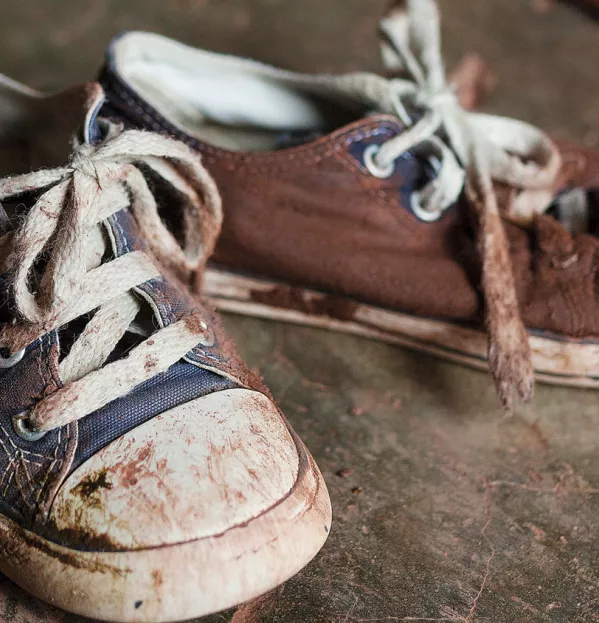In recent years, new and exciting types of footwear have marched triumphantly on to children’s lists for Santa. Shoes are now being found inside stockings as well as outside them. These include shoes with pneumatic soles, shoes with external springs attached and shoes that light up like the Blackpool Illuminations. There are even shoes with hidden wheels that let kids bowl along pavements, scattering slow-moving adults like ninepins.
However, looking towards next term and the more mundane world of new school shoes, it appears innovation has progressed at a more leisurely pace.
The main trend here is one of gradually replacing old-fashioned laces with Velcro straps. Colleagues hoping to nurse themselves through early-onset exhaustion by swallowing large doses of alcohol might not want to hear this, but it is a trend I would like to see continue.
Children’s lace-up shoes are the single biggest cause of gastrointestinal infections in primary teachers
I know the deliberate and persistent engagement and disengagement (particularly the disengagement) of thousands of tiny hooks and loops is painful to teachers. I’ve shushed my way through enough assemblies to write a thesis on Velcro and the incidental abuse of primary practitioners. But sitting in a hall that sounds like it’s been invaded by a swarm of cicadas on a night out in Kavos is better than projectile vomiting your way through the Christmas break.
‘Shoe-born toxins’
It is a little-known fact that children’s lace-up shoes are the single biggest cause of gastrointestinal infections in primary teachers. While there is no scientific data to back up this view, the anecdotal evidence is irrefutable. For example, only recently I arrived home from school on the verge of a serious stomach upset after accidentally ingesting shoe-born toxins. It happened while I was carrying out playground duty on the infant yard.
The chronology of events was as follows. At approximately 2pm, I was infection-free. At 2.03pm, I became aware of Brayden crying loudly and tugging at my sleeve. At 2.04pm, I discovered Brayden had a soggy sock stuck to his foot and an equally soggy shoe in his right fist. Using only wailing noises and the word “shoe” (which, ironically he pronounced “chew”), he communicated to me that I should help him get it back on. A task that first required me to untie his shoelace.
I got my teeth into the problem and thereby sealed a not-so-festive fate
Between 2.05pm and 2.12pm, I tried in vain to do this, but the lace had more knots in it than a queue at a chiropractor’s after the Boxing Day sales, and it wasn’t long before I’d used up all the resources at my disposal. My knowledge of knots faded away like a distant memory of Scout camp. Arthritic fingers protested at being asked to perform unrealistic feats of manipulation. My normally razor-sharp analytical mind lost its edge.
By 2.13pm, Brayden’s desperate whines were calling for desperate measures, so in a moment of madness I quite literally got my teeth into the problem and thereby sealed a not-so-festive fate.
With my contamination already assured, I did not need Mrs Smug to come over and remind me that Brayden spends a lot of time in the boys’ toilets. Or that the reason boys’ shoes get soggy is because, like males generally, their aim is rarely as good as they think it is.
Steve Eddison teaches at Arbourthorne Community Primary School in Sheffield
